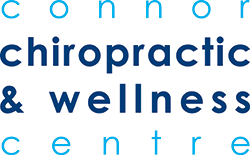Virtual School: Ergonomics for Kids
At the beginning of the pandemic in early 2020 when the world moved to working and learning remotely from home, our chiropractic clinic saw an uptick in both adult and child patients suffering from injuries caused by a decrease in movement and an increase in prolonged sitting in less than ideal positions. Virtual school causes a decrease in opportunities to move.
The good news a few simple changes can make a difference. First, it’s important to emphasize that no single position is a bad position, but rather spending a significant amount of time in any position is bad. This is to say that being hunched over at your desk for 20 minutes of your day, or doing school work while lying on your bed for half an hour isn’t going to have a negative impact. However, spending 6-8 hours in a single position is more than likely to cause discomfort, and if repeated daily may create an overuse injury. When you spend a significant amount of time in a single position ligament creep begins to happen. This is where the ligaments slowly lengthen causing laxity in the ligaments. This ligament laxity can lead to injuries due to decreased joint stability when performing activities after you start moving again.
While the most ideal situation would be to change positions frequently, that isn’t always possible. Below we have gathered a few tips for both younger and older learners to help decrease the risk of discomfort and pain while doing virtual school.
Young Learners Desk Setup:
- When possible set up your kids in a location that allows them to move and change positions easily. While a desk may be essential for part of their day, they may not need to sit at a desk the entire time.
- Use different items such as an exercise ball, wobble board, child-sized chair, pillows/cushions and allow them to rotate through them during class. If you don’t have access to these items, simply encourage your child to try different positions – ask them to stand, kneel, sit cross-legged, lie down, stand on one foot, etc.
- Try to redirect their energy. Resist the urge to tell them to sit still during class. Redirecting their energy may serve them better in the long run. Activities such as standing and kicking a ball between their feet or practicing standing on one foot are great while you have to be on screen. Smaller activities such as squishing play-doh between your fingers or squeezing a stress ball are also beneficial.
- Get them moving on their breaks. While a walk or play time outside would be ideal, it isn’t always possible. Something as simple as yelling out animal names and having your kids walk or jump like that animal is enough. It’s all about changing positions and activating different muscle groups
With older learners and adults it gets a bit trickier because breaks are harder to come by and by default you have to spend more time at a desk. This is when proper desk setup comes into play and can be a make or break contributor to pain and discomfort. If you have a less than ideal setup it’s important to work towards modifying your workstation. While it may not be perfect, even small changes can provide some improvement.
Older Learners Desk Setup:
- Ideally you want your computer screen at eye level. Prop it up using what you have around the house (a plastic bin or basket) to bring it to the proper level.
- Use an external keyboard and mouse when possible.
- You want your elbows at 90 degrees when typing. This can be accomplished by raising your chair. If you do not have an adjustable chair, add pillows or cushions to lift you up.
- Support your feet: If your feet aren’t lying flat on the ground use a stool or textbooks to rest your feet on.
In addition to improving workspaces for older learners it’s important to work in movement breaks. Some quick tips include:
- Quick shoulder and neck stretches between activities (rolling your shoulders, tilting your head to one side for 30 seconds, tucking your chin to your chest etc.)
- Prioritize movement and varied positions after school. For example, sit cross legged on the floor to watch TV instead of sitting on the couch.
- Focus on getting up and walking between classes (just walking around the house for 2-3 minutes can help)
- Standing during class presentations. Simply standing up can help decrease risk of discomfort and pain. Helpful hint: Set a goal for the number of times you want to stand each class.
- Change positions when possible. Even laying on the bed for 30 minutes can be beneficial!
Again it is important to remember that no single position is bad as long as you don’t spend exceedingly large amounts of time in that position. Now, get up and go for a walk around your house.


